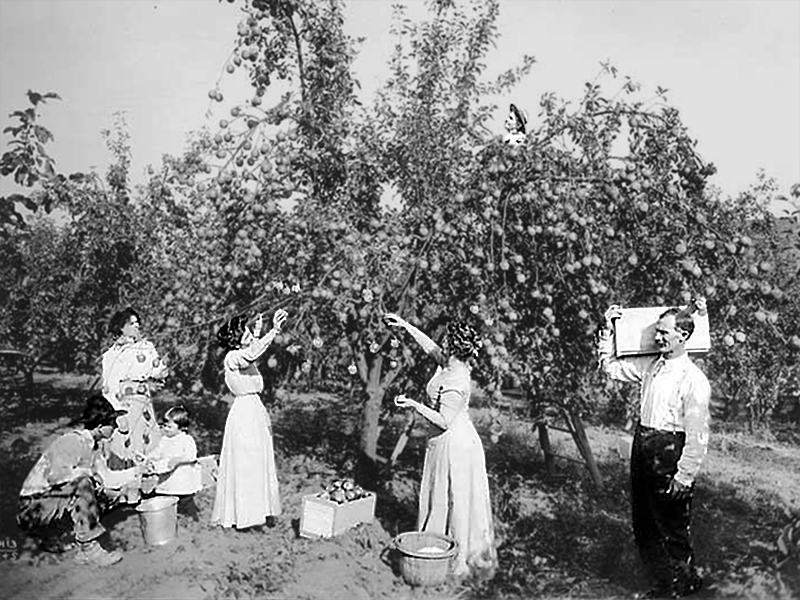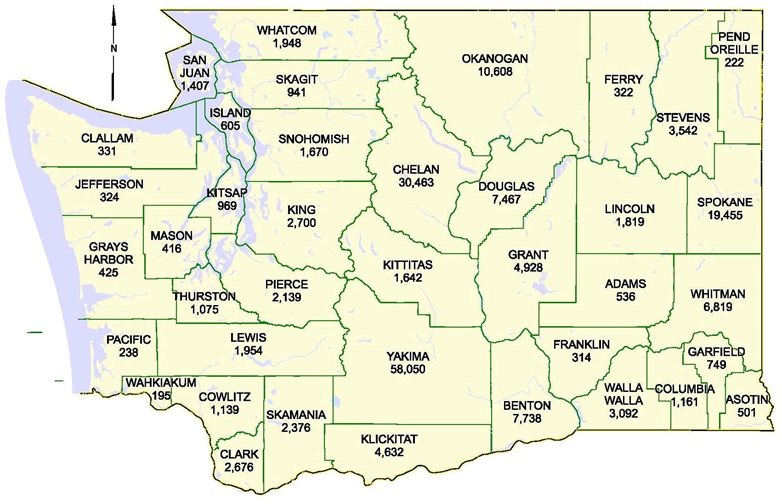
Bloggers note: This blog is part of a series on lead arsenate and its historic use on former orchard lands in Central Washington. Over the next several months we will be engaging the Legacy Pesticide Working Group to help us to address this contamination, especially as these lands transition to new uses like housing developments, schools, and business ventures. Read Legacies of lead and arsenic (part 1).
Lead and arsenic contaminated soil
The issue of lead and arsenic contamination in the soil of historic orchards is not new in Central Washington. The pesticide lead arsenate, which breaks down to lead and arsenic in the soil, was used to control codling moth until 1950.
As more people move to the region, developers are looking at these former orchards as ideal locations to build houses, often without addressing the legacy pesticides. Increasingly, we've been hearing from homeowners and prospective homebuyers who are concerned about these potentially harmful contaminants in the soil. They want to know the health risks and where these properties are located, and developers want predictable ways to cleanup and address the issue.
Taking action
In response, we convened the Legacy Pesticides Working Group to find solutions for addressing contaminated lands when they are converted from agricultural use to residential or commercial use. Our first meeting was Feb. 6, 2020 (see below for more details). Ultimately, our goal is to provide reasonable, low-cost, and protective cleanup options that are feasible and efficient for developers and homebuilders.
“The scope of the legacy pesticide contamination is potentially wide-ranging. It is not our intent to address this by turning every development into a cleanup site under Washington's cleanup law,” explained Jim Pendowski, Ecology’s Toxics Cleanup Program manager. “I believe this group can help us find other solutions that meet the objective of our cleanup law, which is protect human health and the environment.”
The 34-member working group represents a wide variety of interests and backgrounds, including planners, realtors, homebuilders, bankers, developers, health experts, and elected officials. The group will advise us on potential approaches to address contamination and conduct outreach to Central Washington communities.
Our primary objectives for the working group are to:
- Create a process for all properties to be evaluated (for example sampling).
- Identify mitigation measures that meet Ecology’s cleanup regulations.
- Notify buyers and/or current homeowners about the specifics of contamination on their property.(Was it an old orchard? Was it sampled? What were the results? Was it cleaned up?)
- Create a broad-based education strategy for the public about the manageable risk from lead and arsenic.
We know that lead and arsenic soil contamination on historic orchards in Central Washington is a complex issue and has implications for economic growth. We believe that the risk is manageable, cleanup is surmountable, and practical approaches can be found.
Our mapping efforts
Historic orchard acreage in Washington, from agricultural census data.
Unlike other states, Washington has studied and mapped the extent of historic orchards, where it is likely that lead and arsenic contamination exist. Early maps took information from the Agricultural Census to identify orchards that existed before 1950. Nearly 200 square miles of former orchard lands in Chelan, Yakima, Okanogan, Benton, and Douglas counties were identified from the census of 1947. While some of these orchards may not have used lead-arsenate (it was mostly used on apple and pear trees), apples were the main fruit product in the Wenatchee and Yakima areas at the turn of the 20th Century.
Identifying where historic orchards are located is important to understanding potential risks of exposure. We’ve had a lot of folks inquiring about this. In response, we're digitizing aerial photos from the region. As we work to refine those maps, we will make them available to the public as part of a coordinated education and outreach effort. Our continued sampling shows that our aerial photo mapping is highly accurate in predicting high levels of lead and arsenic on historic orchards land, and lower to none on newer orchards.
Kickoff working group meeting – a success
Our first working group meeting was held Feb. 6, in Union Gap. Joy Juelson with Triangle Associates facilitated the meeting and provided context for a common understanding of the soil contamination issue, protective requirements of Washington’s cleanup law, the Model Toxics Control Act, and the goals for the working group.
Some of the discussions at the first meeting centered on:
- Dealing with contaminated soils on individual new homes or existing homes on historic orchard properties versus the process for larger developments.
- Increasing testing of blood lead levels in Central Washington in partnership with the Department of Health.
- An understanding of Ecology’s preferred cleanup methodologies for lead and arsenic.
- Mapping and soil testing for lead and arsenic and how to best convey that information to communities.
- Discussions about outreach, education, and working with developers, lenders, and real estate professionals in the Tacoma Smelter Plume that has similar levels of lead and arsenic soil contamination.
Follow the working group
Over the next few monthly meetings, the working group will come up with recommendations to address the complex issues surrounding lead and arsenic contamination on former orchard lands.
Stay up-to-date on Legacy Pesticide Working Group materials, discussions, and background materials by visiting the Legacy Pesticide Working Group webpage.
Find out more about historic orchard cleanup efforts on our Former Orchard Lands webpage.
Contact information
|
Jill Scheffer |
Jeff Newschwander |


